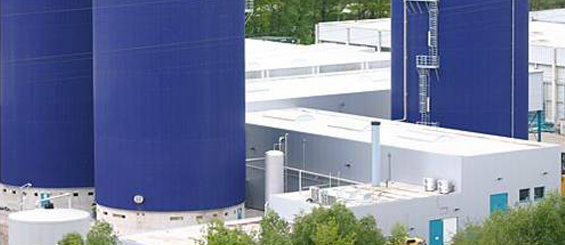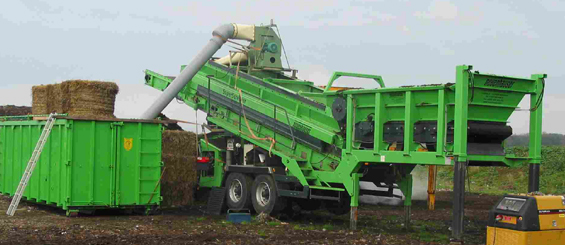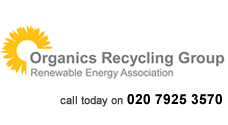Adverts
EC Fertilisers Regulation ~ December 2016 update
This article provides the REA's latest update on European level negotiations on revision of Regulation (EC) No. 2003/2003, known as the EC Fertilisers Regulation. This revised regulation is also likely to amend aspects Regulations (EC) No 1069/2009 and (EC) No 1107/2009, respectively known as the EC Animal By-Products Regulation and the EC Plant Protection Products Regulation.
The scrutiny and negotiation process
Since the European Commission made its March 2016 proposals for a revised EC Fertilisers Regulation, it has been discussed at meetings of the Working Party of the Council of the European Union and on 7th September the EU Presidency made its first proposals for amendments to the core text and Annex I (the latter covering product quality criteria).
In addition, the European Parliament has recently started debating the proposals in its committees for Internal Market and Consumer Protection, International Trade and Environment. Discussion of the proposals also continues to take place at meetings of the Commission's EU Fertiliser Working Group.
The REA is continuing to work with Defra, who participate in Working Party meetings.
Changes proposed so far
Timings for when it will apply
The EU Presidency has proposed that the majority of the revised EC Fertilisers Regulation shall apply from 2 years after it enters into force, rather than applying from 1st January 2018.
Parts of it that would apply upon entry into force are those which: amend ABP Regulation (EC) No 1069/2009 in terms of enabling specific ABP derived products to reach an end point in the manufacturing chain and no longer be subject to that regulation provided they âÂÂno longer pose any significant risk to public or animal health; and enable the Commission to adopt delegated acts that amend any of Annexes I to IV, subject to specified criteria.
Other parts of the regulation that would apply 9 months after it enters into force are rules applicable to common specifications (e.g. laboratory methods for testing samples of product), conformity assessment bodies, and procedures of the committee that assists the Commission.
Product quality
In terms of potentially toxic contaminants, the EU Presidency has proposed tightening of cadmium limits to 2 mg/kg dm in solid organic fertilisers and to 1.5 mg/kg dm in growing media, the Commission having proposed limits of 3 mg/kg dm in these products in its March 2016 version. In organo-mineral fertilisers that contain less than 5 % P2O5, the cadmium limit remains unchanged at 3 mg/kg dm.
Organic fertiliser, organo-mineral fertiliser, organic soil improver and growing medium products would also have to not exceed a total chromium limit of 100 mg/kg dm in addition to the previously proposed hexavalent chromium limit of 2 mg/kg dm. These products would also be subject to the following additional limits: arsenic 40 mg/kg dm, copper 600 mg/kg dm and zinc 1500 mg/kg dm. The EU Presidency has also proposed that for growing media the nickel limit is reduced from 100 to 50 mg/kg dm and the lead limit is reduced from 150 to 120 mg/kg dm.
Discussions about risk of biuret presence in products have prompted the EU Presidency to propose its absence in organic fertilisers (previously the Commission had proposed a 12 g/kg dm limit) and its limit to 12 g/kg dm in organo-mineral fertilisers.
More extensive testing in terms of pathogens and parasites could be required for organic fertilisers, organo-mineral fertilisers, organic soil improvers and growing media. The Commission had proposed that E. coli or Enterococcaeae must not exceed 1000 CFU/g fm. However, the EU Presidency wants these products to comply with this limit level in terms of E. coli and Enterococcaeae. While requirement for absence of Salmonella spp. in 25 g fm remains unchanged, latest proposals also include âÂÂabsence of resistant parasites such as eggs of Ascaris spp. and Toxocara spp.âÂÂ.
Where an organic fertiliser or organo-mineral fertiliser contains 'only one declared nutrient', requirements for minimum total N, P2O5 or K2O, measured in % w/w fm, remain unchanged. However, the EU Presidency has proposed that where organic fertiliser or organo-mineral fertiliser 'contains more than one nutrient' that specified minimum concentrations of:
a) total N and âÂÂtotal sum of nutrientsâÂÂ, or
b) total P2O5 and âÂÂtotal sum of nutrientsâÂÂ, or
c) total K2O and 'total sum of nutrientsâÂÂ
are achieved and that their concentrations are declared.
- - - - - Downloadable documents and REA's previous articles - - - - -
REA's document that sets out Commission proposals and EU PresidencyâÂÂs proposed changes - those relevant to composts, digestates and production of these resources - and compares these with PAS 100 and PAS 110 criteria.
- - - - - - - - - - - - - - - - - - - - - - - - - - - - - - - -
N.B.: The review and negotiating period is on-going so requirements in the finalised, revised EC Fertilisers Regulation may be different.
REA members are welcome to discuss this topic with Emily Nichols (emily@r-e-a.net, 07771 556231).
Webpage published: 02/12/2016.
visitor comments
Members' Area
Become a Member!
Join the Organics Recycling Group at the Renewable Energy Association by clicking below.





.jpg)


